Studying the Ridgway’s Osprey of Belize: Part III
Braving the Caribbean Sea to Survey Turneffe Atoll

For the final leg of our survey of Ridgway’s ospreys in the northern most part of our study area, we set out for Turneffe Atoll. Turneffe Atoll is an archipelago of mangrove islands and coral reef that’s approximately 20 miles east of Belize City. It’s 30 miles long and 10 miles wide and Belize’s largest coral atoll. Luckily, it was declared a marine reserve in 2012, which protects it from future development. Turneffe is an amazing assemblage of different marine habitats which provide habitat for a variety of many different species of wildlife, including American crocodiles (more on this later!), conch, spiny lobster, manatees, dolphins, sea turtles, and many species of birds, coral and fish. The mangrove islands are large with taller trees on the interior of the island. This is where most, if not all, the ospreys nest. We left on Monday, February 20th.

To get to Turneffe, we had to travel quite a distance (35 miles) to get there from Sittee River. We lucked out with all of our previous surveys with regards to the weather. The wind never blew too hard to postpone our work, which made everything go so smoothly. Traveling to Turneffe would prove otherwise… While on our way there, we surveyed several more osprey nests, but first we got our first real glimpse of one of Ridgway’s biggest competitors, the magnificent frigatebird (Fregata magnificent). Dr. Paul Spitzer hypothesizes that the population of Ridgway’s is affecting by kleptoparasitism (parasitism by theft) by frigate birds. He suggested there was a “halo effect” of nesting ospreys around frigate colonies. What we observed defends Paul’s hypothesis. In the area (7 mile radius) around the frigatebird colony, we only observed one osprey nest, which was 3 miles away.

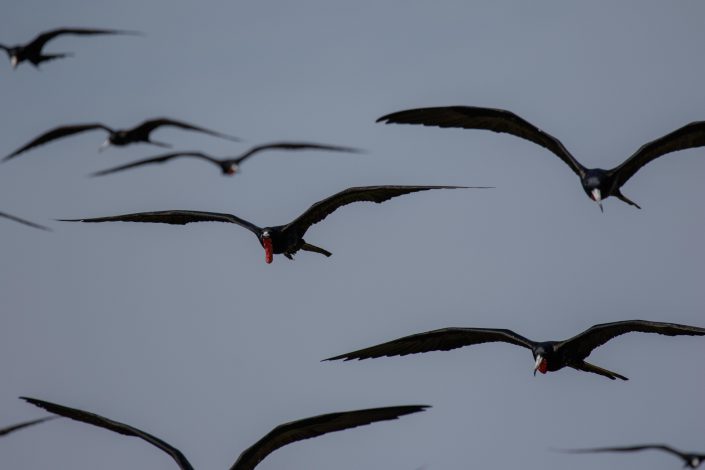
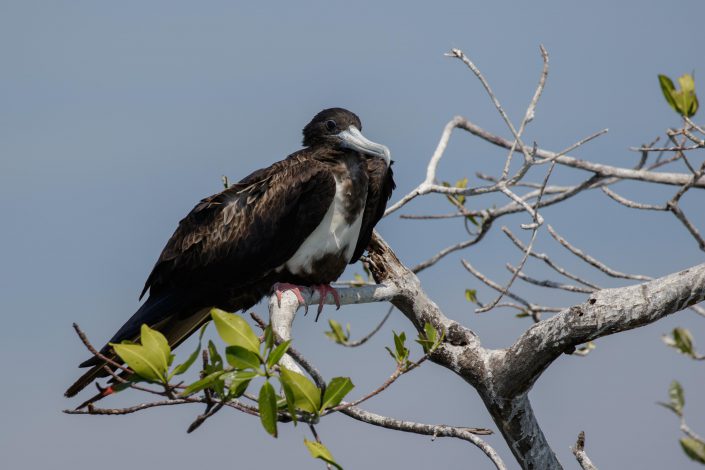



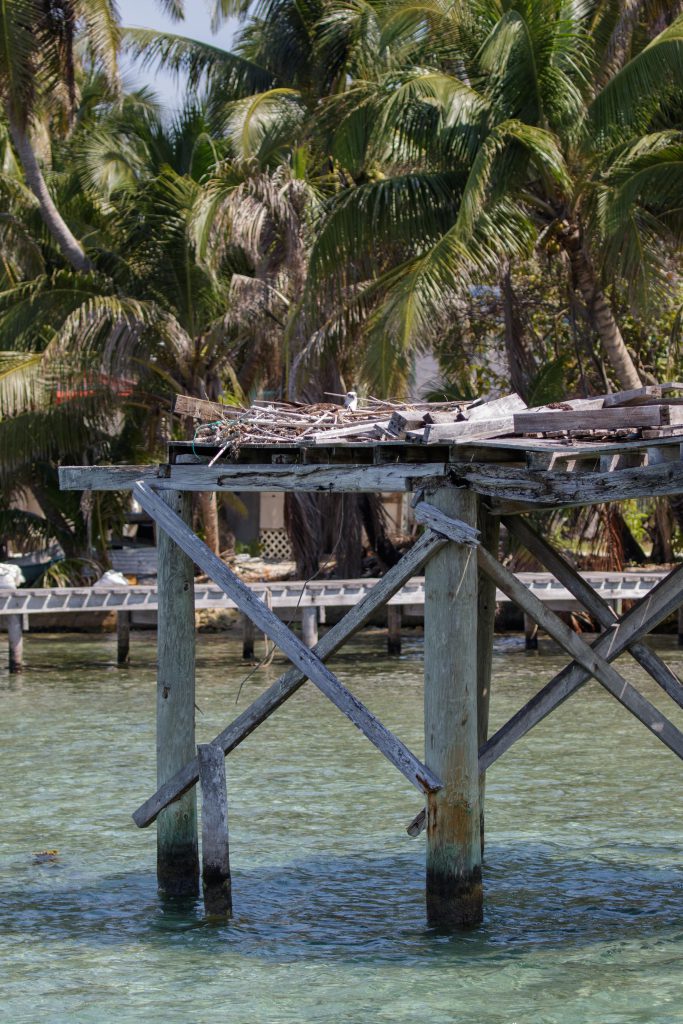
Once we got past Tobacco Caye, while heading north to the Turnoffs, there were a couple more small Cayes, Sand Fly & S. Long that we surveyed before exiting the safety of the barrier reef.




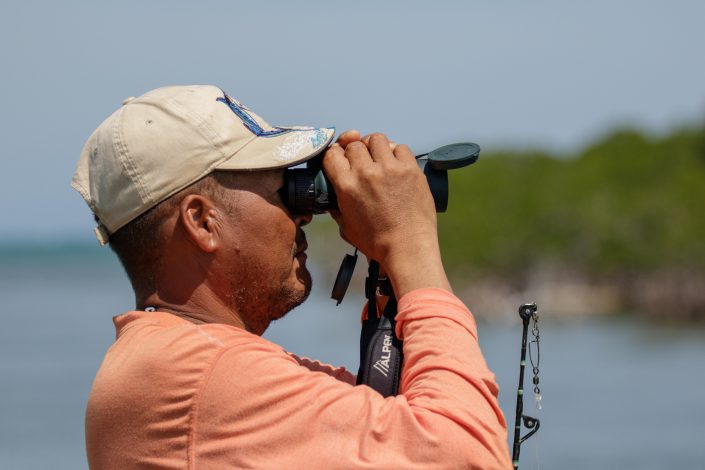


The journey to the Turnoffs was the first time we had ventured out into the Caribbean Sea. The weather was gorgeous but it was windy. The winds were blowing out of the ENE at around 15-20mph with gusts around 20-25. Not great when heading right into it! Suffice to say, the trip was a little scary for some, but as a seasoned veteran of navigating the waters of the Caribbean, Horace handled the rolling 8-10′ sea with ease. It was very cool to see how much protection the coral reef offers to these delicate barrier islands. They easily take the brunt of the open sea and waves and the difference boating in and out of the reef was now totally apparent. Without the reef, there would not be mangrove islands for ospreys to nest here.
Upon arriving to the southern end of Turneffe Atoll, we surveyed several nests on our way to the Calabash Caye Field Station for University of Belize, where we would spend the next two nights. Most nests in the Atoll were found in the “high spine” areas of the island, where ospreys nest in tall snags (dead black, white mangrove trees). To see these nests, we had to be further away from the island to get the best vantage point. Initially, when I jumped at the opportunity to join this study, I wanted to bring a small UAV to use as a tool to see into nests. I have practiced my skills of flying small drones over the past couple years and am beginning work here in New Jersey to conduct a study using drones to survey active nests. My hypothesis is that ospreys are unaffected by the use of drones when the operator is away from nest and the drone is at a distance where the birds don’t recognize it as a threat. When I do start my work in New Jersey then I’m going to compare the behavior of the adults when I fly a drone over their nest and when I walk out to a nest and climb up using a ladder, and another when I don’t climb but use a mirror to see how many nestlings are in the nest. When I looked into bringing one to Belize, I saw many red flags, so I decided not to bring one this time. Though it would have been a very useful tool to help gather data while reducing stress to the adults for any nests that we climbed.


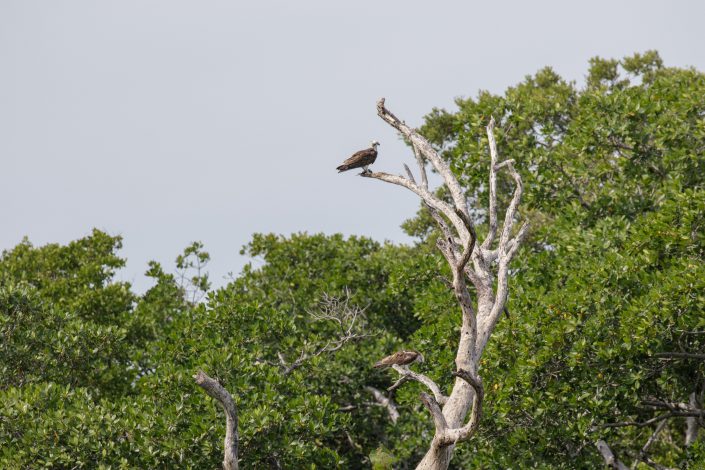
We then pass by a huge resort that is new but looks abandoned…


Then we find a nest that’s active with one nestling (near fledging) that’s just south of Calabash Caye. Now we were all wearing down in the heat of the day and were hoping for a quick snorkel on a coral reef, but instead we raced to the Field Station to get to dry land (I think Paul just needed his siesta :).

We arrived at Calabash at around 3pm. We unloaded our gear and checked out where we would be staying.



Jay and I still had the urge to snorkel even though a reef was nowhere nearby and the beach was too rough from the ENE winds. So we asked one of the local cooks if there was a trail to get to the backside of the island. There was, so we ventured into the lush tropical forest with our snorkeling gear. The trail meandered through the forest for a while until we reached a very old wooden dock, which didn’t look too inviting..


Since we hiking all the way back there, we decide to jump in for a swim. The blackwater lagoon was quite still. There was not much to see besides some small baitfish, mangrove snapper, seagrass and a few jellyfish. As we swam around, trying not to stir up the muddy sediment on the bottom of the shallow lagoon, we begin to rethink our decision to swim there… As the visibility was degraded from us stirring up some of the mud, we decide to pack it in and head back to the Field Station and try diving on the beach (despite the wave action). The beach wasn’t much better with very little visibility… In turn, we end up finding out that Turneffe Atoll holds one of the most densely populated nesting colonies for American crocodiles! Fun stuff!


Now we rest up for our last survey of the northern part of the island, Turneffe flats, which I’ll write about in my last part of this blog series.
- Click here to view Part I or Part II.
- Click here to view a gallery of all my photos from Belize.
- For those who donated to get a reward (photo), click here to see our top shots (photos that you can chose to receive). These are on time for you to receive in early May.
Discover more from Conserve Wildlife Foundation of NJ
Subscribe to get the latest posts sent to your email.